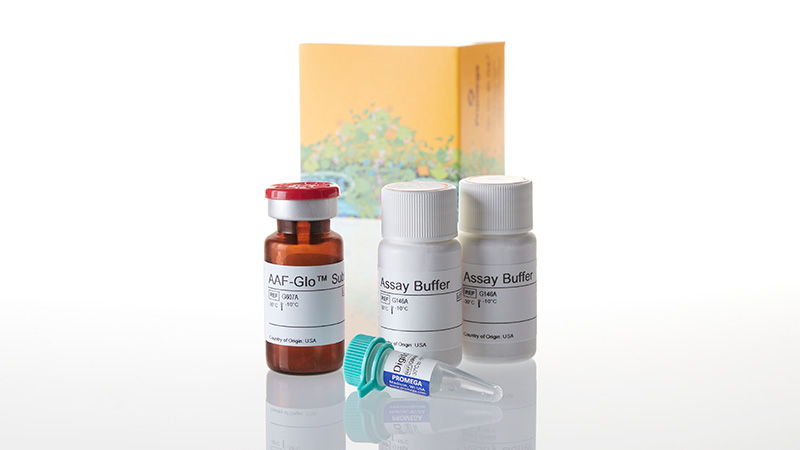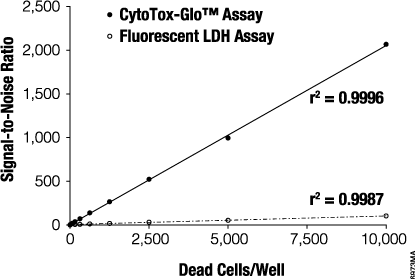인류의 건강과 생명공학 발전을 위해 봉사하는 기업 드림셀
We Serving the Health and Biotechnology of Humanity
We Serving the Health and Biotechnology of Humanity

제품코드 : G9290
제품정보 : Cytotoxicity Assay
The CytoTox-Glo™ Assay is a luminescent cytotoxicity assay that measures the relative number of dead cells in cell populations. The assay measures the extracellular activity of a distinct intracellular protease activity (dead-cell protease) when the protease is released from membrane-compromised cells. A luminogenic cell-impermeant peptide substrate (AAF-aminoluciferin) is used to measure dead-cell protease activity. The liberated aminoluciferin product is measured as "glow type" luminescence generated by Ultra-Glo™ Recombinant Luciferase provided in the assay reagent. The AAF-aminoluciferin substrate cannot cross the intact membrane of viable cells and does not generate any appreciable signal from the live-cell population. The amount of luminescence directly correlates with the percentage of cells undergoing cytotoxic stress.
With the addition of a lysis reagent (provided), the CytoTox-Glo™ Assay also can deliver the luminescent signal associated with the total number of cells in each assay well. Viability can be calculated by subtracting the luminescent dead-cell signal from the total luminescent value, thus allowing you to normalize assay data to cell number and mitigate assay interferences that may lead to erroneous conclusions. The cytotoxicity protease biomarker is constitutive and conserved across cell lines, and the CytoTox-Glo™ Assay demonstrates excellent correlation with other methods of assessing cell viability.


The CytoTox-Glo™ Assay detects small changes in viability because of its high sensitivity. This graph shows the superior signal-to-noise ratios of the CytoTox-Glo™ Assay compared to a fluorescent LDH assay. Detects as few as 200-500 cytotoxic cells in a total population of 10,000 cells and less than 10 cytotoxic cells in a limiting dilution series.

Determining cytotoxicity and viability by lysis. The luminescent signal collected after lysis was adjusted to reflect the "live cell" contribution by subtracting the initial dead cell signal. The data above are plotted as "dead cell" or "live cell" signal versus the concentration of calcium ionophore.
Notes
Using 100μl/assay in a 96-well plate format, Cat.# G9290 is sufficient to perform 100 assays; Cat.# G9291, 500 assays; Cat.# G9292, 1,000 assays. Using 25μl per well in a 384-well plate format, Cat.# G9290 is sufficient to perform 400 assays; Cat.# G9291, 2,000 assays; Cat.# G9292, 4,000 assays.